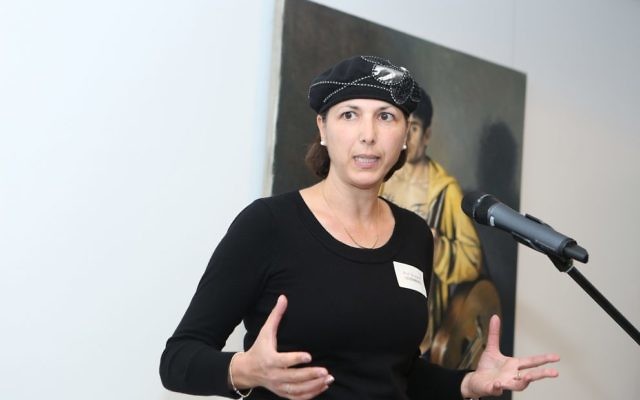Technion prof inspires Aussie researchers
INCREDIBLE biomedical breakthroughs – including growing beating heart tissue and engineering the world’s first muscle flap transplant with its own blood supply – have been achieved by Professor Shulamit Levenberg in her lab at Israel’s Technion since 2007.

INCREDIBLE biomedical breakthroughs – including growing beating heart tissue and engineering the world’s first muscle flap transplant with its own blood supply – have been achieved by Professor Shulamit Levenberg in her lab at Israel’s Technion since 2007.
Now researchers at three Australian universities will benefit from collaborative projects with the Technion’s Dean of Biomedical Engineering, strengthened during her visit to Perth and Sydney from July to mid-August, facilitated by Technion Australia.
Levenberg told The AJN that growing 3D tissue structures that have blood vessels, by using stem cells and biodegradable scaffolds, has so much potential to repair damaged organs, treat diabetes and even spinal cord injuries.
“To see the whole piece of cardiac tissue we created in the lab spontaneously beating in front of your eyes was really amazing,” Levenberg said.
“But what really excited us was that we could create a blood vessel network, which is critical in keeping the implant alive and making revascularisation in the body faster.”
Tissue engineering has been used to create islet transplants for diabetes patients, to repair severe tissue injuries in mice and even to produce meat in the lab.
“That is a new application, but we are very excited about the regenerative medicine direction, and we hope spinal cord regeneration will happen in humans one day,” Levenberg said.
“The next step is to make the tissues larger and to move from pre-clinical to clinical trials.”
Levenberg came on a Raine Fellowship to the University of Western Australia’s (UWA) Perkins Institute for Biomedical Research, where she lectured, and connected researchers with Technion colleagues.
“We are starting several research projects with UWA on using combinations of biomaterials, and we’ve got funding for spinal cord regeneration research from the Perth-based Shervington Fund,” Levenberg said.
“We’re also discussing further collaborations in spinal cord research with the University of Technology in Sydney, and we now have a collaboration with Professor Tony Weiss at the University of Sydney, where we are using tropo-elastin that he developed to coat scaffolds.”
Technion Australia is in the process of planning a fundraising project to support that collaboration.
A passionate mentor to biomedical engineering students and to girls interested in science, Lewenberg said, “I think the most important thing is to show young people that to be a scientist is doable and exciting. My advice is to do what excites them, and not be afraid that something may seem too difficult.”
SHANE DESIATNIK

comments